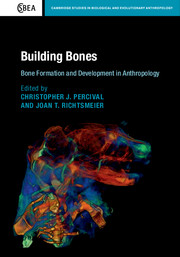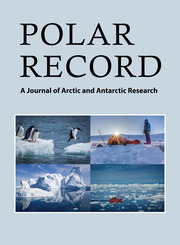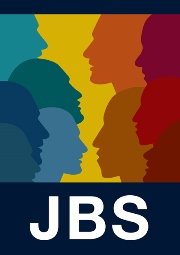Bioarchaeology
Interpreting Behavior from the Human Skeleton
2nd Edition
$158.00 (C)
Part of Cambridge Studies in Biological and Evolutionary Anthropology
- Author: Clark Spencer Larsen, Ohio State University
- Date Published: March 2015
- availability: Available
- format: Hardback
- isbn: 9780521838696
$
158.00
(C)
Hardback
Other available formats:
Paperback, eBook
Looking for an examination copy?
If you are interested in the title for your course we can consider offering an examination copy. To register your interest please contact [email protected] providing details of the course you are teaching.
-
Now including numerous full colour figures, this updated and revised edition of Larsen's classic text provides a comprehensive overview of the fundamentals of bioarchaeology. Reflecting the enormous advances made in the field over the past twenty years, the author examines how this discipline has matured and evolved in fundamental ways. Jargon free and richly illustrated, the text is accompanied by copious case studies and references to underscore the central role that human remains play in the interpretation of life events and conditions of past and modern cultures. From the origins and spread of infectious disease to the consequences of decisions made by humans with regard to the kinds of foods produced, and their nutritional, health and behavioral outcomes. With local, regional, and global perspectives, this up-to-date text provides a solid foundation for all those working in the field.
Read more- The most comprehensive survey of the field - introduces topics and presents studies in a cohesive manner, not matched by any other book on the market
- Thoroughly revised and updated - the book retains its clear and engaging analysis and integrates newly emerging areas (such as paleodemography and social bioarchaeology)
- Jargon-free, richly illustrated, and contains numerous case studies and references - students are shown the key role of human remains from archaeological contexts in interpreting life events and conditions of past and modern cultures
Reviews & endorsements
"This new second edition of Clark Larsen's classic text Bioarchaeology presents an impressive synthesis of new methodology and information gleaned from analysis. Written by one of our most accomplished practitioners, this text is a must-read for anyone who seeks a comprehensive overview of this dynamic field. Although the author indicates he 'cherry-picked' the literature in assembling this volume, the reference list is extensive and indicative of the depth of research reflected in this new edition."
Doug Ubelaker, forensic anthropologistSee more reviews"I have waited with immense anticipation for the arrival of this second edition, the first having been of great value to myself and my students. This updated book provides a comprehensive overview of how bioarchaeology enables us to understand the nuances of our ancestors' lives and deaths, and who we are today. It is published at a time when bioarchaeology is thriving as a discipline in archaeology and anthropology, which has over the last twenty or so years benefited from new methodological developments, and is attracting interest from a range of other disciplines. Larsen has again very successfully synthesised a huge amount of information to provide an accessible text that covers subject matter ranging from the impact of infectious diseases on humans, through injury and violence, to biological distance and isotopic analysis. I am convinced that this book will again be welcomed by the bioarchaeological community."
Charlotte Roberts, University of Durham"This updated volume exhaustively discusses the full range of analytical techniques that are available for the study of human remains from ancient, historic and modern (forensic) contexts. Included in each chapter is a diverse set of examples drawn from the author's lifetime of outstanding research. The inclusion of a new chapter on paleodemography is important because age and sex are the foundation for all analyses. This book shows by example how to get it right and how to expand the interpretations to include a wide range of contextual factors. For those who are already familiar with human osteology, this book presents the stunning array of analytical procedures that can be used to make the bones come alive. As a handbook of bioarchaeologal methods, there is nothing else like this on the market. This book deserves a wide readership among those interested in learning about the analytical potential of human remains."
Debra Martin, University of Nevada, Las Vegas"This thoroughly revised and greatly expanded edition is the single best coverage of rapidly developing interdisciplinary research that draws upon fields as diverse as biological anthropology, medicine, developmental biology, biomechanics, archaeology and history. Students and established scholars alike will find much of value in this comprehensive, authoritative, empirically rich and heavily referenced volume that is simultaneously deliberately provocative and forward looking."
George R. Milner, Pennsylvania State University"Since the first edition of Bioarchaeology went to press almost twenty years ago the bioarchaeological literature has exploded. Human remains from archaeological sites all over the world are providing unparalleled insights into life in the past, from the weaning practices of ancient Egyptians, to the techniques of ritual sacrifice used by the Moche of Peru, to status-differences in workload in medieval central Europe - all are meticulously recorded in bone. It was a monumental task to pull the first volume together and an exponentially greater one this time around. Clearly bioarchaeology has come of age and Larsen captures not only the state of the art of the discipline, but also its sheer breadth and depth in this extraordinary synthesis. Bioarchaeology has been and will continue to be the go-to volume in the field."
Patricia Lambert, Utah State University'In the nearly two decades since the first edition, there have been major analytical and methodological advances in the field of bioarchaeology, and they are clearly reflected in Larsen's new edition. … [this is] a comprehensive and inclusive volume that is definitely worth having, even for those who already have a copy of the first edition. … The new edition includes color images and has many more, higher resolution figures in general; this improvement over the first edition enhances the teaching utility of the book, making it a more self-contained resource than before. … [Larsen] succeeds in representing the huge breadth of the field. Readers will learn not only how much can be learned about life in the past using human skeletal material but also how challenging the reconstruction of past behavior can be. This new edition of Bioarchaeology certainly deserves to be on the bookshelves of all scholars in the field.' American Journal of Human Biology
Customer reviews
Not yet reviewed
Be the first to review
Review was not posted due to profanity
×Product details
- Edition: 2nd Edition
- Date Published: March 2015
- format: Hardback
- isbn: 9780521838696
- length: 654 pages
- dimensions: 255 x 181 x 35 mm
- weight: 1.48kg
- contains: 124 b/w illus. 56 colour illus. 16 tables
- availability: Available
Table of Contents
Preface
1. Introduction
2. Stress and deprivation during growth and development and adulthood
3. Exposure to infectious pathogens
4. Injury and violence
5. Activity patterns 1: articular degenerative conditions and musculo-skeletal modifications
6. Activity patterns 2: structural adaptation
7. Masticatory and nonmasticatory functions: craniofacial adaptation to mechanical loading
8. Isotopic and elemental signatures of diet, nutrition, and life history
9. Biological distance and historical dimensions of skeletal variation
10. Bioarchaeological paleodemography: interpreting age-at-death structures
11. Bioarchaeology: skeletons in context
12. References
Index.-
Find resources associated with this title
Type Name Unlocked * Format Size Showing of
This title is supported by one or more locked resources. Access to locked resources is granted exclusively by Cambridge University Press to instructors whose faculty status has been verified. To gain access to locked resources, instructors should sign in to or register for a Cambridge user account.
Please use locked resources responsibly and exercise your professional discretion when choosing how you share these materials with your students. Other instructors may wish to use locked resources for assessment purposes and their usefulness is undermined when the source files (for example, solution manuals or test banks) are shared online or via social networks.
Supplementary resources are subject to copyright. Instructors are permitted to view, print or download these resources for use in their teaching, but may not change them or use them for commercial gain.
If you are having problems accessing these resources please contact [email protected].
Sorry, this resource is locked
Please register or sign in to request access. If you are having problems accessing these resources please email [email protected]
Register Sign in» Proceed
You are now leaving the Cambridge University Press website. Your eBook purchase and download will be completed by our partner www.ebooks.com. Please see the permission section of the www.ebooks.com catalogue page for details of the print & copy limits on our eBooks.
Continue ×Are you sure you want to delete your account?
This cannot be undone.
Thank you for your feedback which will help us improve our service.
If you requested a response, we will make sure to get back to you shortly.
×






